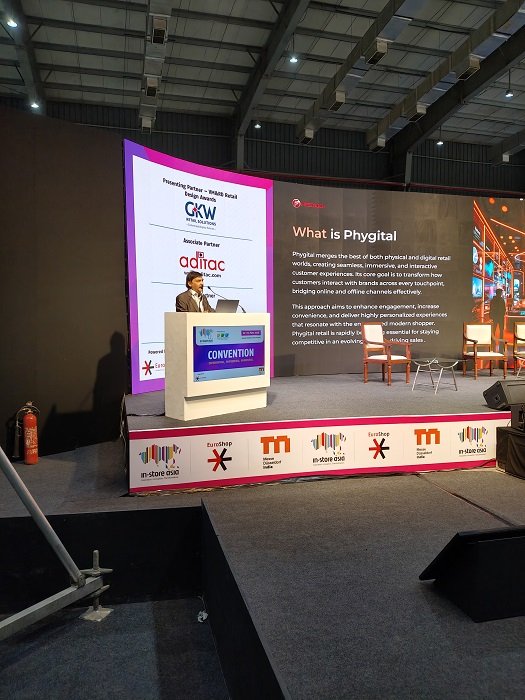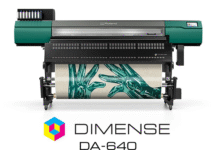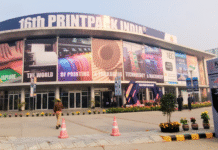At the In-Store Asia expo, Ajay Gupta, founder of Firstouch Solutions, a digital signage solutions and communications brand, unpacked the future of retail—one that seamlessly blends physical and digital realms. Gupta outlined the urgent need for retailers to embrace the ‘phygital’ model, where digital technologies are embedded within the brick-and-mortar experience to create immersive, convenient, and data-driven shopping journeys.
In-Store Asia is taking place at Bombay Exhibition Center from 22-24 May.
“We’re not just talking about mobile apps or eCommerce add-ons,” Gupta said at a conference at the show. “Phygital is about integrating digital experiences directly inside the physical store environment. It’s a convergence that must be seamless and strategic.”
Gupta highlighted how phygital retail is evolving from traditional signage and static branding to dynamic content, interactive displays, real-time information systems, and experiential technologies like AR and VR. According to him, this transformation is not a trend but an inevitability, powered by declining hardware costs, rising consumer expectations, and the growing ubiquity of digital infrastructure in India.
Branding, engagement, and information in real-time
Gupta outlined four core pillars of phygital retail: dynamic branding, in-store promotion, customer engagement, and live information management. “Digital branding is no longer just about replacing flex banners with LED screens—it’s about crafting fluid, adaptive experiences that evolve with the customer,” he said.
He cited examples from sectors such as FMCG, liquor, tobacco, and pharmacies, where brands are replacing traditional printed materials with real-time digital displays. “You can now update information across thousands of stores with a single click,” he said, referencing his work with Marlboro, where 15,000 screens have replaced traditional promotional materials.
Customer engagement has also seen a leap with technologies such as electronic shelf labels, mobile-linked price comparison tools, and interactive kiosks.
Experiential retail: the new normal
The most transformative aspect of phygital, Gupta noted, lies in its experiential capabilities. Augmented and virtual reality applications, such as virtual trial rooms and AR-based interior previews, are enabling customers to envision products in their own contexts before making a purchase. “You’re not just selling a product—you’re selling a dream,” he said.
Highlighting the case of IKEA and digital cosmetics counters, Gupta explained how such tools don’t just enhance the brand experience—they accelerate decision-making and boost sales.
Technology at the core: kiosks, hardware and RFID
Gupta spotlighted innovations in food courts and QSRs, referencing Firstouch Solutions’ recent project at Mumbai Airport, where self-order kiosks now allow passengers to order from multiple restaurants and receive deliveries at their boarding gate. “McDonald’s saw a 35% increase in sales after installing kiosks. This is no longer optional—it’s transformational,” he emphasized.
In the realm of hardware, Gupta stressed the importance of engineering precision. From anti-glare, high-brightness displays to fanless processors and front-maintenance systems, he warned that poorly executed installations could damage brand perception. “Designers need to work hand in hand with software engineers and hardware specialists. Phygital isn’t just visual—it’s deeply technical.”
He also discussed the rise of RFID-based self-checkouts, especially in lifestyle and fashion retail, where long billing queues are becoming unacceptable to time-conscious consumers.
Collaboration and careful planning are key
In concluding his talk, Gupta urged all stakeholders—store designers, software developers, and brand managers—to collaborate early in the design process to avoid costly missteps. Whether it’s a standalone digital installation or a site-specific deployment, success hinges on thoughtful planning, technical accuracy, and clear communication.
“The future of retail is phygital,” Gupta said. “It’s here, it’s growing, and it’s only going to accelerate. With the right approach, it can transform customer convenience, elevate the brand, and drive serious growth.”
















